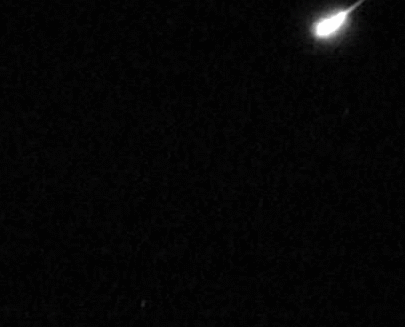Don’t Miss Tonight’s Meteor Showers! (Fri. 5/23)
Our family loves star gazing and I always try to find out when the next meteor showers pass by. Tonight there is a brand new meteor shower that may light up the night sky. They are called the Camelopardalids. Scientists aren’t sure exactly how many shooting stars we’ll see, but they could shower down at a rate of 1-per minute. If the showers happen they should be visible in all parts of the sky.
In 2004 a new comet was discovered called Comet 209P/LINEAR. According to the Washington Post the comet was discovered by the Lincoln Near Earth Asteroid Research telescope run by MIT’s laboratory. The telescope is located in New Mexico and is funded by the US Air Force and NASA. Their mission is to find asteroids that threaten to hit the Earth. Astronomer Carl Hergenrother, who has been studying the comet, said there is no danger to Earth.
The comet is one to three miles long. This is the first time Earth will cross the trail left behind by this comet. Most of the particles in the dust trail are smaller than grains of sand and will burn up in the Earth’s atmosphere. Astonomer Hergenrother is quoted on the NASA website saying
“What’s really nice about this particular comet [209P/Linear] is that we’re going right smack in the middle of these dust trails and the meteors are going to be pretty slow,” Hergenrother said. “They’re actually going to last maybe for a second or two. It’s going to look almost like slow moving fireworks instead of the usual shooting stars that we’re used to.”
Everyone wants to know when the best viewing time is, right? We might be able to see some activity starting around 10:30pm (EST), but the peak will be between 2am-4am. If you are outside the US, here is some information about viewing the Camelopardalids in other time zones. The shower will be better in the Northern Hemisphere than in the Southern.
I thought it was interesting how this meteor shower got its name, the Camelopardalids. It is named after a northern constellation. Annual meteor showers get their names from the constellations from which they appear to radiate. The constellation got its name in ancient Rome where it was thought of as a composite creature – a cross between a camel and leopard. Nowadays we call this creature a giraffe!
One website pointed out that if the comet was a poor producer of debris, we might see nothing. Since the weather where we live is supposed to be nice, I’m thinking we’ll have a backyard camp out tonight. Sounds like fun whether we see shooting stars or not!
Photo Credit: Picture created by NASA and shared at Wikipedia Commons























































2 Responses
[…] at a rate of 1-per minute. If the showers happen they should be visible in all parts of the sky. Read full article Don't Miss Tonight's Meteor Showers! (Fri. 5/23)down at a rate of 1-per minute. If the […]
[…] at a rate of 1-per minute. If the showers happen they should be visible in all parts of the sky. Read full article Don't Miss Tonight's Meteor Showers! (Fri. 5/23)down at a rate of 1-per minute. If the […]